About two weeks ago I visited an exhibition that will remain in my memory for a long time. This doesn't happen often as there were a few I already forgot because the artworks were less for my taste. There's nothing wrong with that as we don't have to like everything. This exhibition on the other hand was very different. The artist was Éva Barabás, a 82 year old lady, who is not selling her artworks.
The name of the artist did not ring a bell, but as soon as I saw the artworks, knew that I saw her works before and could remember exactly which one it was and where it was placed in the gallery. Funny how the human brain works. I think it's safe to say I have selective memory. I remember the important and things and pleasurable moments and tend to forget the rest. It's working for me and I'm happy with it as why pile up info and memories I don't need.
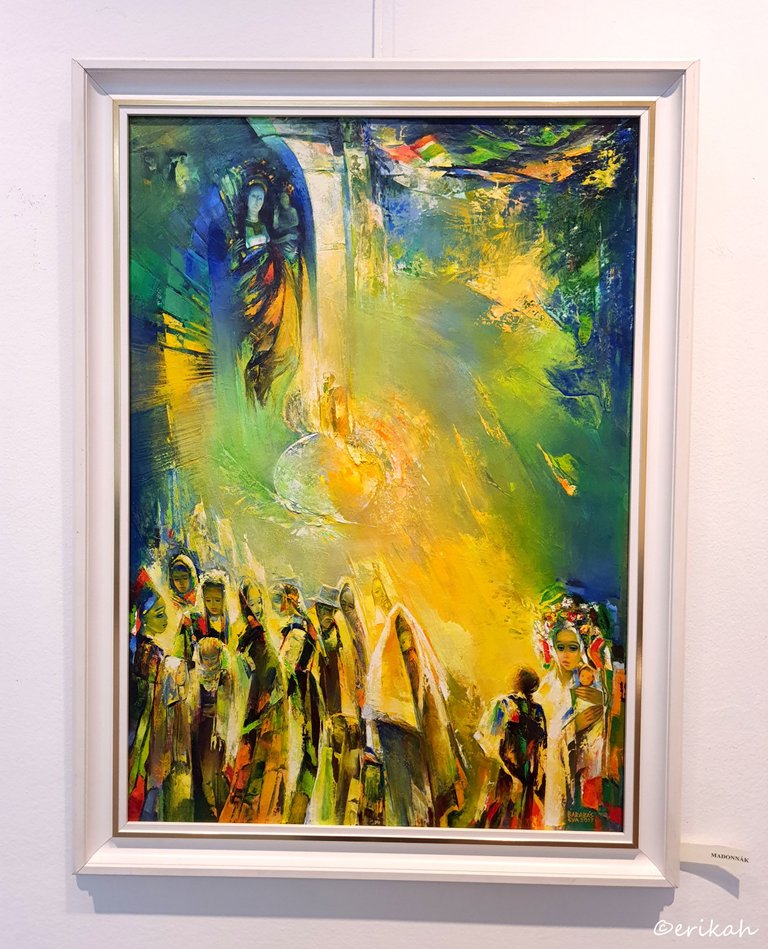
Madonnas
This was the painting I saw before at an other exhibition and I remember, was standing in front of it and looking at it for like 5 minutes, thinking I'd be glad to have it in my collection. Then I asked the gallery lady if there are artworks for sale and found out this particular one is not for sale, but even if it would, would cost around 3000€. This saved me from the heartache as I'm not at the level of paying that kind of money for an artwork yet. The funny thing is, I can't explain why I liked this painting so much, and I still do. It's a religious scene, I'm not religious, but still like it and was really pleased to see it again at this exhibition.
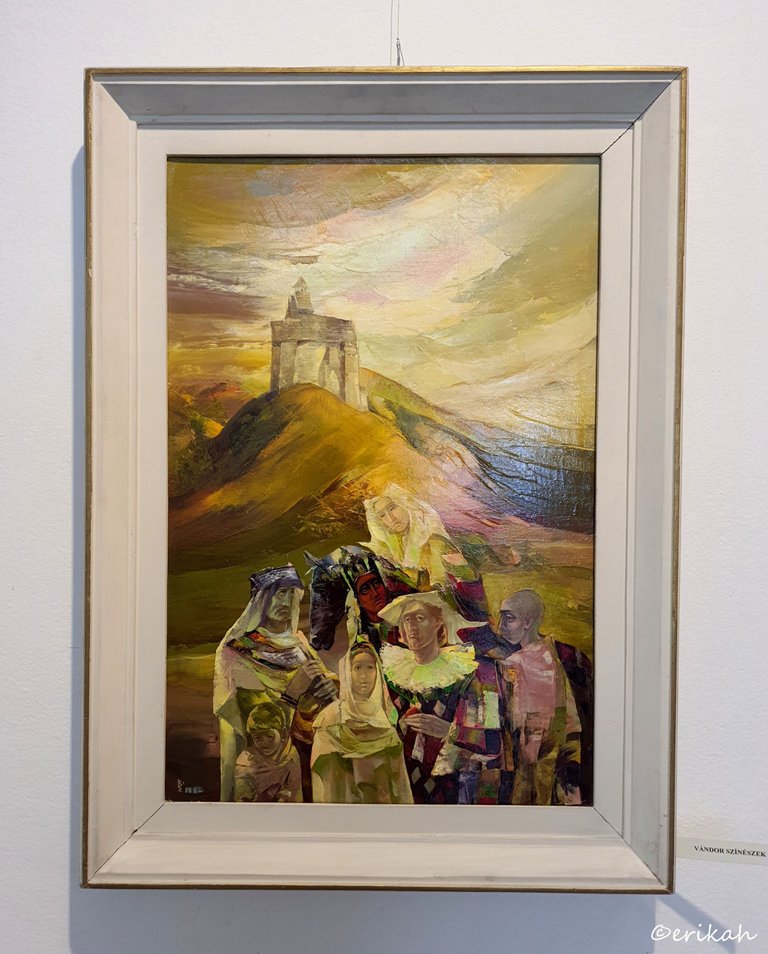
Itinerant Actors
Another lovely one, although, judging from the face expression of the actors, they are not happy. It's not a surprise if you know what itinerant actors' life has been. It has never been easy for them to make a living, moving from one place to another, hoping to get paid. Today it is not any different, unless you're famous.
There's something interesting in this painting. How the artist choose to paint the actors at the bottom of the canvas and make the church and the golden light dominate in the background. Maybe the size and the proportion of the two means something.

Drifting
Most likely I'm going to run out of superlatives soon as this is brilliant too. I'm going to crop the photo for you to see the canvas better.
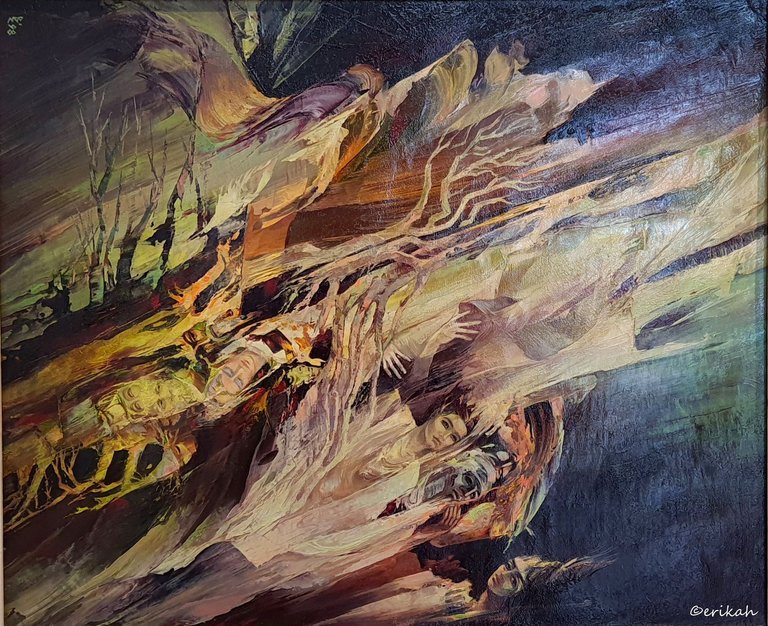
People and nature are drifting together. I've seen something similar once, but can't remember the details exactly. I liked this one too.
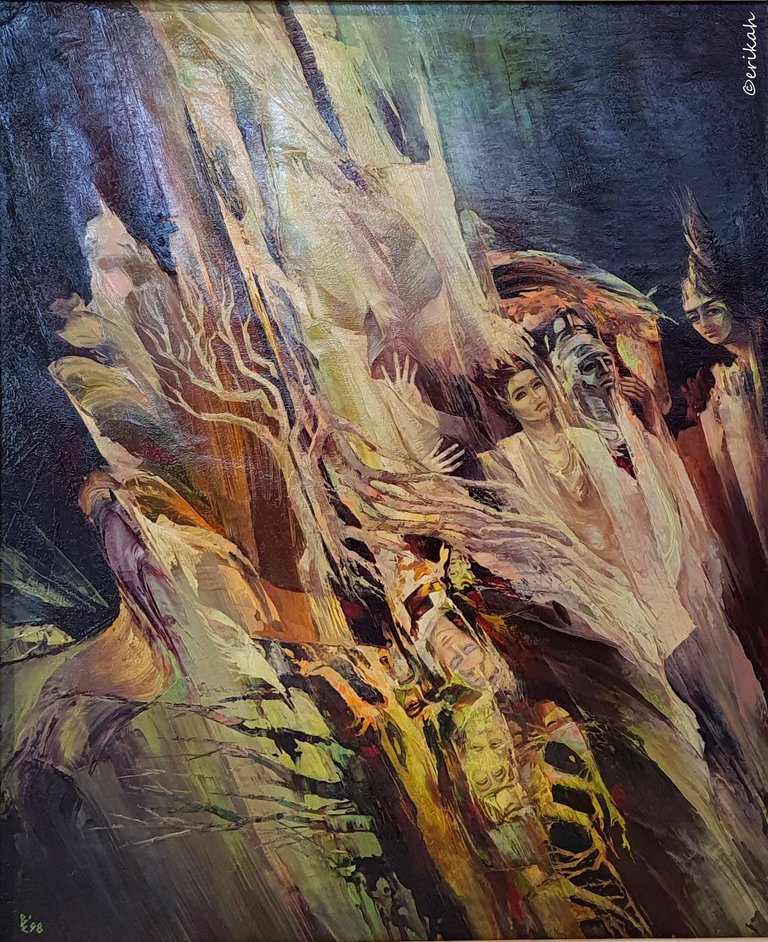
Here's the painting rotated 90° to the left. Look at those faces, read the emotions on those faces. And only now I can see that the painting was signed in this position, which makes me question if it was hung the right way, or not because if not, that changes everything. Now tell me which one do you like? The original position, or the rotated one? Wow, what a thing! I'm not sure yet, but tend to believe I like the latter more.
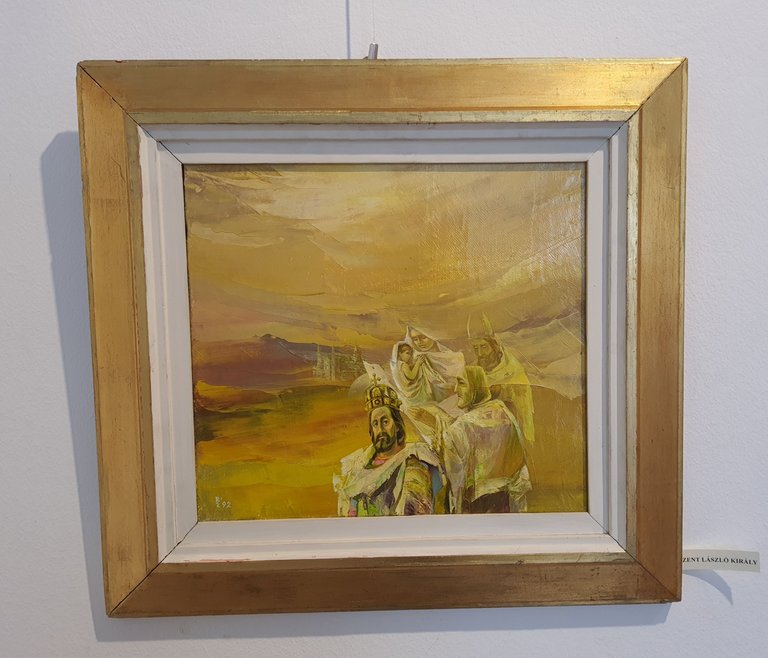
Saint Ladislas
Ladislaus I (Hungarian: I. László, Croatian: Ladislav I., Slovak: Ladislav I., Polish: Władysław I; c. 1040 – 29 July 1095), also known as Saint Ladislas, was King of Hungary from 1077 and King of Croatia from 1091. He was the second son of King Béla I of Hungary and Richeza (or Adelaide) of Poland. After Béla's death in 1063, Ladislaus and his elder brother, Géza, acknowledged their cousin Solomon as the lawful king in exchange for receiving their father's former duchy, which included one-third of the kingdom. They cooperated with Solomon for the next decade. Ladislaus's most popular legend, which narrates his fight with a "Cuman" (a Turkic nomad marauder) who abducted a Hungarian girl, is connected to this period. The brothers' relationship with Solomon deteriorated in the early 1070s, and they rebelled against him. Géza was proclaimed king in 1074, but Solomon maintained control of the western regions of his kingdom. During Géza's reign, Ladislaus was his brother's most influential adviser. source
If you look closely, you can see almost the same setup of arranging on the canvas. the characters are at the bottom of the canvas, the focus in on them, and in the background, the castle. The golden light is ruling here too.
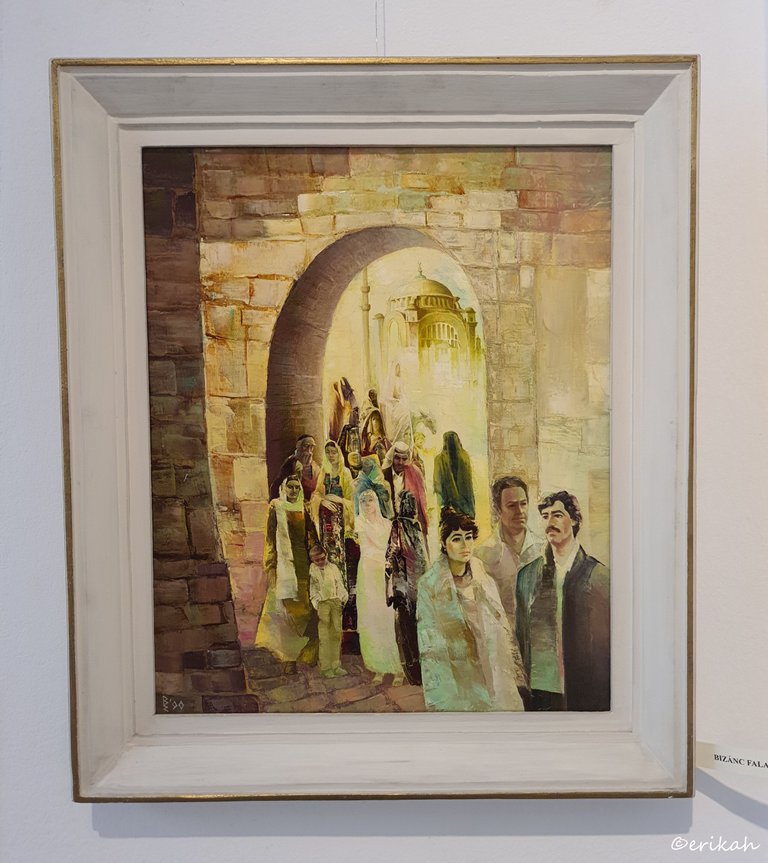
At the Byzantine Walls
This is a lovely one too. I love how the mosque is in the background and people are coming out passing through the arcade. But there's something that does not fit or I don't understand what the artist meant.
Look at the 3 characters in the right corner. It seems to me they are characters from the present, while the rest of the painting is really from the Byzantine era, which ended in 1453. The first thing I noticed was their faces, which look like people we see these days. Then their clothes. Compare them with the rest of the people and you'll see what I mean. Maybe the artist wanted the past to meet the present at this significant place.
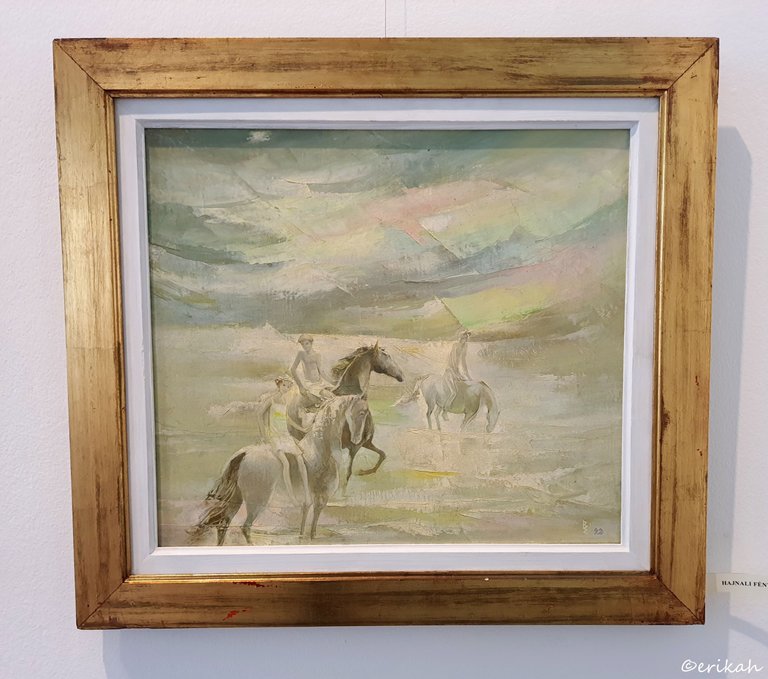
Light of dawn
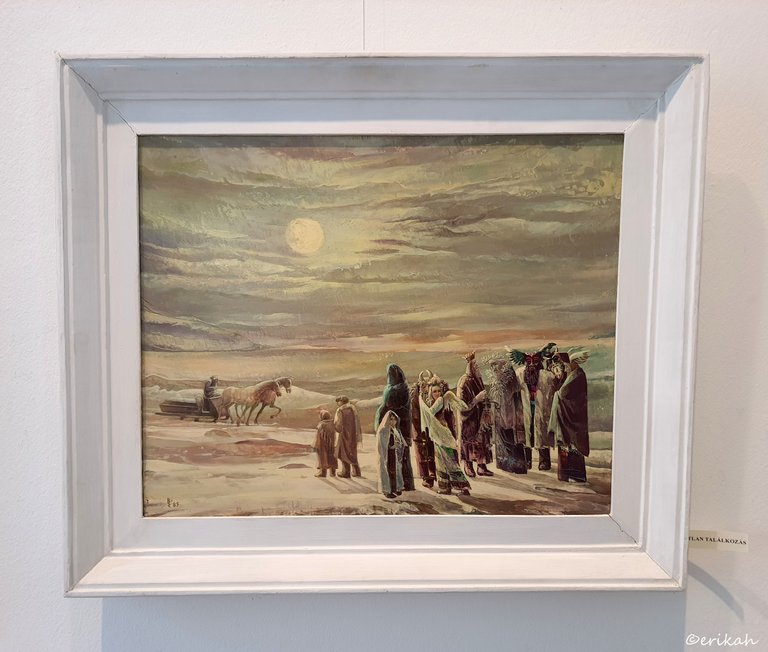
Unexpected Meeting
Another gorgeous one. Those colors and the light are the ones that make the main characters on the right stand out.
I enjoyed the exhibition a lot and am glad I got the opportunity to photograph these paintings as now they are back to the artist and who knows if there will be another occasion to see them.
I'm really curious what you think about these paintings. Let me know in a comment.

If you're a newbie, you may want to check out these guides:
- Communities Explained - Newbie Guide
- Cross Posting And Reposting Explained, Using PeakD
- Hive Is Not For Me
- How To Pump Your Reputation Fast - Newbie Guide
- Tips And Tricks & Useful Hive Tools For Newbies
- More Useful Tools On Hive - Newbie Guide
- Community List And Why It Is Important To Post In The Right Community
- Witnesses And Proposals Explained - Newbie Guide
- To Stake, Or Not To Stake - Newbie Guide
- Tags And Tagging - Newbie Guide
- Newbie Expectations And Reality



